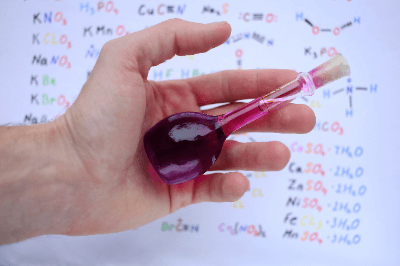What Is a Densimeter?

Specific gravity refers to the ratio of the mass of a particular substance to the mass of an equivalent volume of a standard substance.
A densimeter, also known as a specific gravity meter, is a device used to measure this specific gravity. While the term specific gravity applies to solids, liquids, and gases, this article focuses on densimeters used for measuring the specific gravity of liquids.
In simple terms, the principle involves measuring the buoyancy force acting on an object. If the specific gravity of water is considered as 1, an object will sink if its specific gravity is greater than 1 and float if it’s less. The most common device that operates based on this principle is the hydrometer.
A hydrometer is a calibrated scale that floats in a liquid, and the specific gravity is determined by reading the scale.
Modern densimeters have evolved to include various types such as load cell-based, vibration-based, differential pressure-based, and radiation-based models. Some of these newer models feature digital displays, simplifying the measurement process compared to traditional hydrometers.
Applications of Specific Gravity Meters
Densimeters find applications in a wide range of fields, including pharmaceuticals, food processing, industry, and scientific research.
Common uses include:
- Measuring the salinity of seawater
- Assessing the sugar content of fruits used in juice production
- Determining the concentration of various chemical solutions in industries like semiconductors, plating, and battery electrolytes
- Measuring fat content in milk
- Calculating alcohol content by volume ratio in alcoholic products
- Assessing impurity levels in petroleum products
Principles of Densimeters
The basic structure of a hydrometer is depicted in Figure 1. It consists of a body that provides buoyancy and a scale placed within it.
The lower part of the body contains an adjustable weight for buoyancy control. When immersed in the liquid to be measured, the buoyancy acting on the scale equals the weight of the liquid displaced by the scale’s volume.
As a result, the scale sinks into the liquid to a degree where its weight is balanced by the buoyancy force. The scale is graduated, and when equilibrium is reached, the reading on the scale corresponds to the liquid’s surface.
While most hydrometers are constructed from glass, plastic hydrometers are also available.
Other Types of Densimeters
Non-Floating Scale Densimeters
Besides hydrometers, other types of densimeters are primarily used in industrial settings. These include load cell-based, vibration-based, differential pressure-based, and radiation-based densimeters.
A load cell densimeter converts force magnitude into an electrical signal to precisely measure the weight of a submerged object in a liquid. It calculates the specific gravity of the test liquid based on the load change.
These densimeters offer higher measurement accuracy compared to conventional hydrometer-type densimeters and are less susceptible to operator skill variations, making them ideal for analytical tasks.
Vibration-based densimeters involve injecting the test liquid into a U-tube, which is then vibrated externally. The U-tube vibrates at a frequency determined by its mass, including the liquid. Consequently, the liquid’s mass within the U-tube can be calculated from this frequency, allowing the density of the sample to be determined.
These densimeters are widely used for quality control, particularly in the food industry, due to their intuitive operation and rapid measurement capabilities.
Differential pressure densimeters utilize pressure differences between two points along a measuring tube, which are proportional to the liquid’s specific gravity.
Radiation-based densimeters rely on the variations in gamma ray transmittance emitted by radioisotopes, which are influenced by the density of the material being measured.